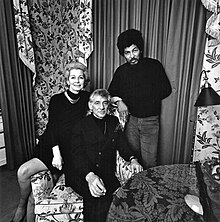
Back Radical chic Spanish Radical chic ID Radical chic Italian Radikal eleganse NB Radical chic Portuguese Radical chic SC

Radical chic is the fashionable practice of upper-class people associating with politically radical people and causes. Coined in the 1970 article "Radical Chic: That Party at Lenny's" by journalist Tom Wolfe, the term has become widely used in languages such as American English, French, and Italian. Unlike dedicated activists, revolutionaries, or dissenters, those who engage in "radical chic" remain frivolous political agitators—ideologically invested in their cause of choice only so far as it advances their social standing.
The concept has been described as "an exercise in double-tracking one's public image: on the one hand, defining oneself through committed allegiance to a radical cause, but on the other, vitally, demonstrating this allegiance because it is the fashionable, au courant way to be seen in moneyed, name-conscious Society."[1] "Terrorist chic" is a modern expression with similar connotations. This derivative, however, de-emphasizes the class satire of Wolfe's original term, instead accentuating concerns over the semiotics of radicalism (such as the aestheticization of violence).
- ^ Bracewell, Michael (November–December 2004). "Molotov Cocktails". Frieze Magazine. Archived from the original on December 1, 2008. Retrieved April 5, 2009.
© MMXXIII Rich X Search. We shall prevail. All rights reserved. Rich X Search